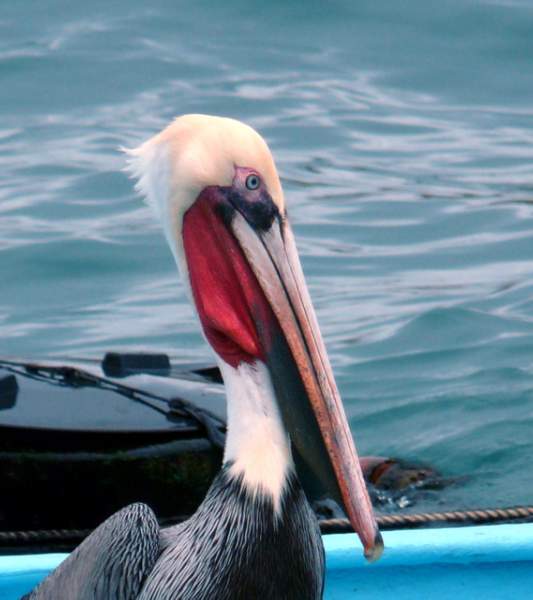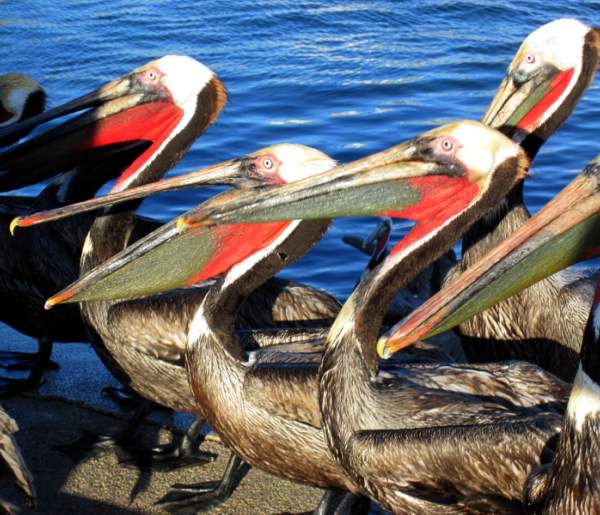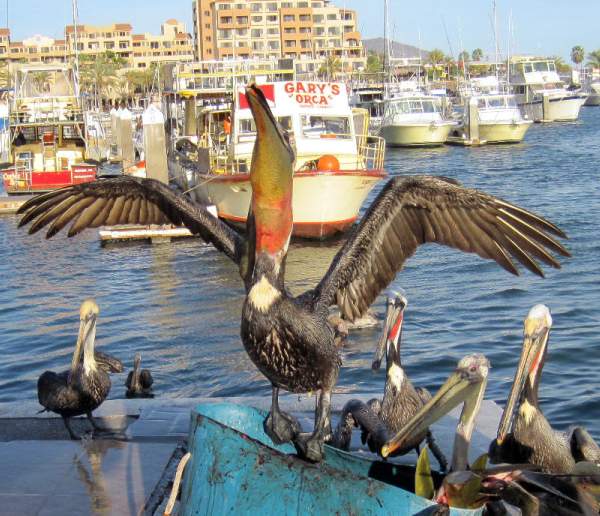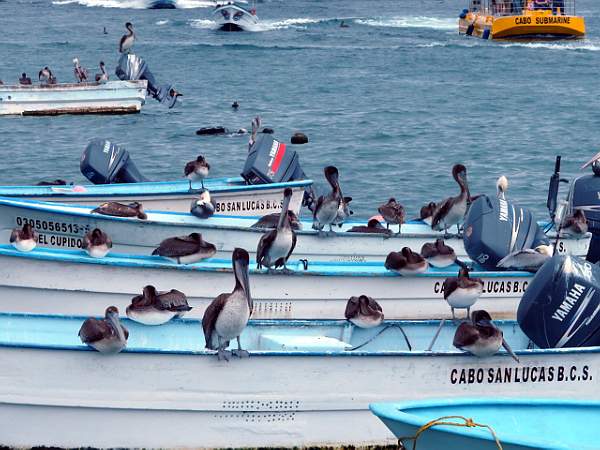Published in the Ocean Watch column, Honolulu Star-Advertiser © Susan Scott
June 21, 2010
Pictures of oil-soaked pelicans are everywhere these days, and if seeing those suffering, bedraggled birds coming ashore from the Gulf of Mexico isn’t heartbreaking enough, we now hear that washing them may be a waste of time and money. Few birds, some sources say, survive the stress.

That certainly was the thinking in 1997. In January of that year, I wrote in this column about two new studies showing poor survival rates of oiled seabirds that had been cleaned, fed, rested and released. Only about 10 percent of pelicans could be found later, and even fewer of the smaller seabirds survived.
In the 13 years following, though, we’ve had more oil spills and more chances to study washed birds. As veterinarians and biologists gained knowledge, results got better. After a spill in South Africa in 2000, the survival rate for rehabilitated penguins and gannets (seabirds similar to our booby birds) was about 80 percent.
In North American studies, cleaned western gulls did as well as nonoiled western gulls, and washed snowy plovers had a high rate of breeding success. As for brown pelicans: Their post-washing recovery rate has been an encouraging 50 to 80 percent.
During visits to Mexico during the past two years I’ve had the pleasure of getting to know brown pelicans, native to both coasts of the Americas.
Pelicans are crazy for fish (and fish guts), and when humans intrude on their fishing grounds, the birds adapt. Brown pelicans bob patiently around trawlers and sports fishing vessels, and at fish markets and cleaning stations, the birds jostle each other to catch tossed scraps. Around marinas, pelicans waddle along piers on their stumpy legs waiting for someone to land a fish.

The sight of these big birds flip-flopping down the dock on their big webbed feet always brightened my day. How can you not love a bird that carries a shopping bag on its beak?
The brown pelican is about the size of a Laysan albatross with a similar wingspan and an equally graceful flight. Pelicans are famous for flying in perfect drafting formation so close to the water’s surface that their wingtips sometimes touch the water.

While anchored in a Baja cove, Craig and I once saw it rain pelicans. We woke to the sound of loud splashing, as if an avalanche of rocks was falling into the bay. The noise was plunging pelicans. About 100 were bombarding a school of silver fish.
Those plunges were more like cannonball crashes than springboard dives, but the birds were catching their fish. We could see them wiggling inside the pelicans’ pouches. The birds would raise their jaws skyward, gulp down the meal and then lift off for another dive.
Having thousands of people washing birds might not be the most efficient use of cleanup money, but the instinct to help injured animals, especially when we caused the injuries, is strong in humans. Even if all bird rehabilitation was officially halted today, people would still try. And so bird experts continue do the best they can and use the results as learning tools.
My learning tool for this spill is my bicycle. When I’m tempted to drive a short distance for an errand, I recall those pictures of pelicans in seabird hell and get on the bike. When I’m pedaling for pellies, it’s easy to ditch the car.
You can help the Gulf’s birds by supporting the International Bird Rescue and Research Center, www.ibrrc.org. The site offers up-to-date information on rescue efforts, and shows encouraging before-and-after pictures.
